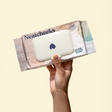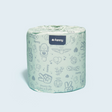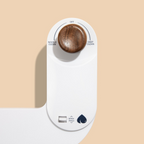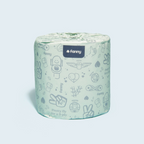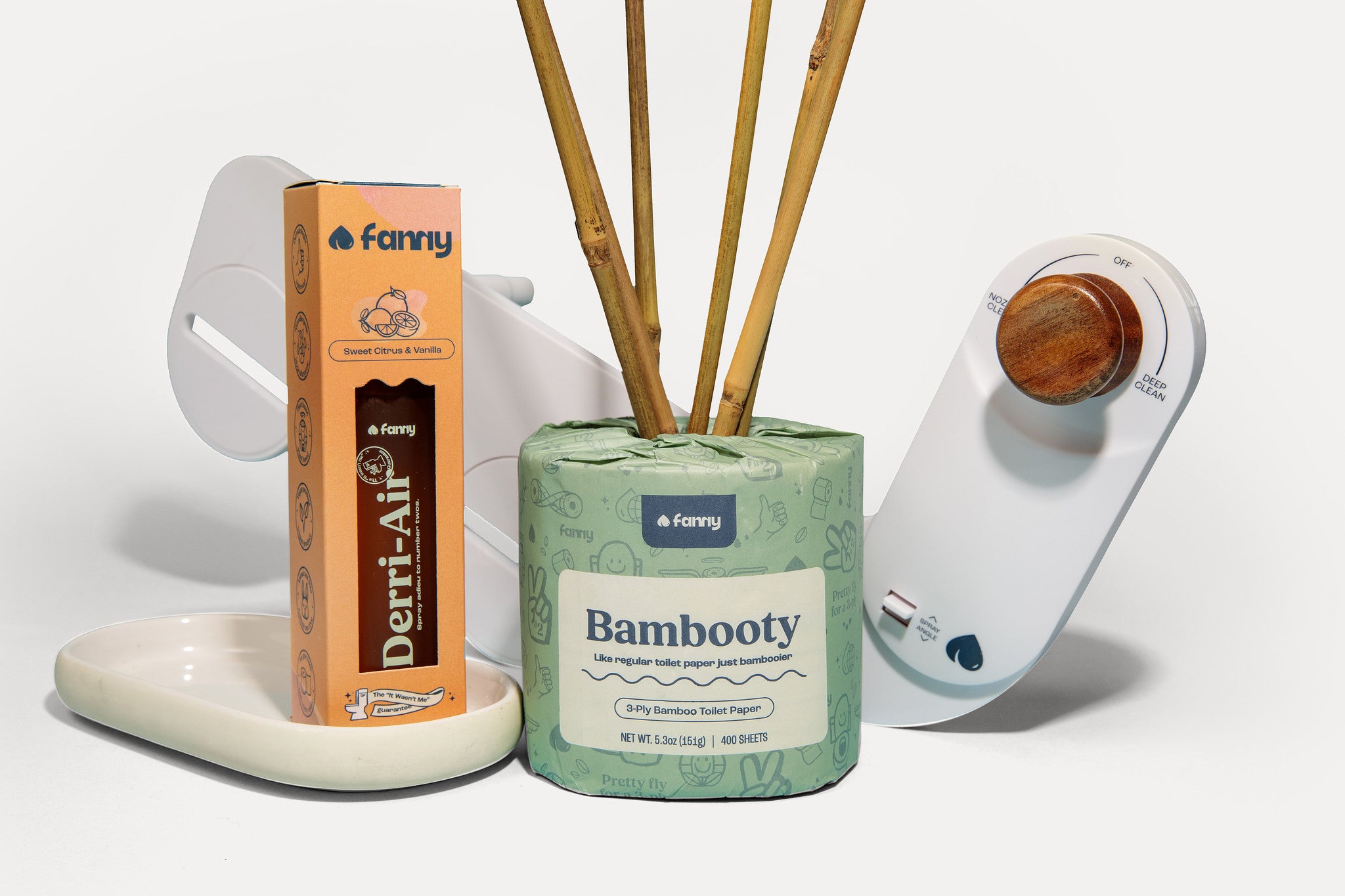Bamboo Toilet Paper: The Good, the Bad, and the Surprisingly Strong
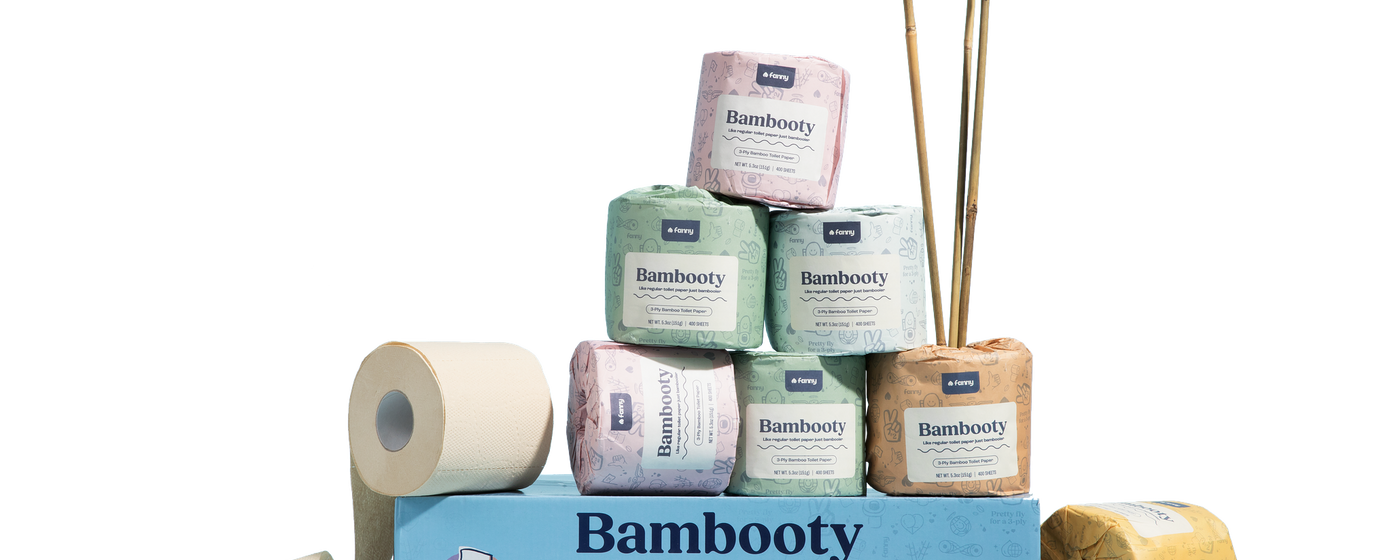
In the age of climate consciousness, toilet paper, the humble bathroom staple has come under scrutiny due to its impact on the environment and your wallet. Enter bamboo toilet paper, the eco-friendly contender vying for a spot in your bathroom. But is bamboo truly the savior of your backside and the planet, or is it just another “greenwashed” gimmick? Let's see, it’s biodegradable, hypoallergenic, and somehow manages to be both soft and strong. Plus, it’s free from the chemical soup found in traditional options, so your skin isn’t subjected to a chemistry experiment every time you sit down. Sure, it may cost slightly more upfront, but it’s so durable you’ll be using fewer squares per wipe. Let’s dive into the pros, the cons, and everything in between.
The Pros of Bamboo Toilet Paper
1. Biodegradable and Septic-Safe
Bamboo toilet paper breaks down more easily than regular toilet paper, making it a dream for septic systems. If you’ve ever had the misfortune of dealing with a clogged toilet (who hasn’t?), you’ll appreciate how bamboo TP minimizes plumbing headaches.
- Fun anecdote: A friend once joked, “Using regular TP is like feeding your toilet a cheeseburger, it struggles. Bamboo TP? That’s a salad for your pipes.”
2. A Tree-Free Solution to Wiping
Traditional toilet paper comes at a hefty environmental cost. Each year, tens of millions of trees are sacrificed to keep up with our TP demands here in the U.S. Bamboo, however, grows like a weed, literally. Some species can grow up to 3 feet in a single day. This rapid growth means bamboo is far more sustainable to harvest than slow-growing trees like oaks or pines.
- Real-world example: A single acre of bamboo can yield 20 times more material than an acre of trees, making it a powerhouse for eco-friendly production.
3. Low Environmental Impact
Bamboo is not just fast-growing; it’s also a champion at carbon sequestration. It absorbs 35% more carbon dioxide than trees and releases more oxygen into the atmosphere. Plus, it requires no pesticides or fertilizers to grow, making it kinder to ecosystems.
- Interesting Perspective: Think of bamboo as the overachieving, eco-conscious cousin of traditional paper. While trees are slouching through centuries, bamboo is like, “Hold my chlorophyll, I’ll fix this carbon crisis.”
4. Gentle on Skin
For those with sensitive skin, bamboo toilet paper is a game-changer. Unlike conventional options, which often contain harsh chemicals like bleach, dyes, or fragrances, bamboo TP is naturally hypoallergenic. It’s also free of BPA and other toxins commonly found in recycled paper products. Not to mention that many bamboo toilet paper is typically 3-ply, which means it is going to feel like the expensive quilted stuff you may be accustomed to.
5. BPA & PFAS-Free: Because Your Butt Deserves Better
Regular toilet paper can sneak in nasty chemicals like PFAS (per—and Polyfluoroalkyl Substances) and BPA (Bisphenol A), the kind of stuff used to whiten or soften paper but not great for long-term health. Bamboo toilet paper? It skips those toxic extras.
Now, about bleaching: good brands (such as Bambooty) use chlorine-free methods that are both safe and eco-friendly. Bamboo toilet paper isn’t just about saving trees, it’s about ditching chemicals and treating yourself to a cleaner, healthier bathroom experience. Your fanny and the planet will thank you.
- Real-world fact: Bamboo fibers are naturally soft and smooth, making it less abrasive than some tree-based alternatives. Your tushy will thank you.
The Cons of Bamboo Toilet Paper
1. Price Tag Shock
Let’s address the bamboo in the room: it can be a bit more pricey than regular TP. On average, bamboo toilet paper costs about 10-20% more than standard TP, depending on the brand. For budget-conscious households, this can feel like a splurge.
- Example: A pack of Bambooty bamboo toilet paper might set you back $17, while traditional brands hover around $15 for the same amount.
2. Availability Issues
While bamboo toilet paper is growing in popularity, it’s not yet as ubiquitous as its tree-based counterpart. You might need to order it online or visit specialty stores, which can be inconvenient (and sometimes involves extra packaging or shipping emissions).
- Witty complaint: “Great, I’ve saved the planet but added five Amazon delivery boxes to my recycling bin. Progress?”
3. Greenwashing Concerns
Not all bamboo toilet paper is created equal. Some brands market themselves as eco-friendly while still using energy-intensive manufacturing processes. Additionally, most bamboo toilet paper is produced in China, meaning it racks up a hefty carbon footprint during transportation.
- Scientific insight: While bamboo grows sustainably, the chemical processing needed to turn it into soft, white toilet paper can offset some of its environmental benefits. Again, this depends on the brand.
4. It’s Not Always the Softest
Let’s be real, bamboo toilet paper can’t always compete with the pillowy softness of high-end tree-based brands. If you’re accustomed to the plush luxury of triple-ply TP, bamboo might feel like a small step down.
- An interesting truth: “Soft enough” is a subjective term when it comes to TP. Some people embrace the slightly firmer feel as a badge of eco-friendly honor. Others? Not so much.
Comparing Bamboo to the Competition

- Bamboo vs. Recycled Toilet Paper
Both options aim to reduce the environmental toll of traditional TP, but they have distinct pros and cons:
Bamboo: Stronger, softer, and hypoallergenic, but pricier and sometimes greenwashed.
Recycled TP: Cheaper and easier to find, but often contains BPA and isn’t as soft.
- Bamboo vs. Bidets
Let’s throw bidets into the mix because why not? Bidets arguably beat bamboo TP in terms of sustainability. They use water (an average of 1/8 gallon per use) but eliminate the need for paper entirely.
Humorous take: Bamboo TP is like hybrid cars, it’s better than the alternative but still part of the old system. Bidets? They’re the Teslas of the bathroom world.
The Future of Bamboo Toilet Paper
Despite its drawbacks, bamboo toilet paper represents a step in the right direction. As technology advances, production methods will likely become more eco-friendly and cost-effective, making bamboo TP more accessible to the masses.
Scientific outlook: Emerging methods like enzymatic pulping could reduce the environmental impact of bamboo TP manufacturing. Meanwhile, the growing demand for sustainable products may incentivize companies to invest in local production, cutting down on transportation emissions.
Should You Switch to Bamboo Toilet Paper?
If you care about the environment, have sensitive skin, and don’t mind spending a bit extra, bamboo toilet paper is an excellent choice. It’s not perfect—few things are—but it’s a significant improvement over traditional TP in terms of sustainability and comfort.
Real-world advice: Start small. Try a pack and see how it fits your lifestyle. Bambooty is available in an 8-pack, which is priced very competitively and let's you take a dip to test out the waters before jumping in. You can also consider alternating between bamboo TP and a bidet to strike a balance between sustainability and savings.
Switching to bamboo toilet paper is like switching to a reusable water bottle. At first, it feels like a hassle and a hit to your budget. But over time, you realize it’s not just better for the planet, it’s better for you, too. So, go ahead, give Bambooty 3-ply bamboo TP a shot. Your bathroom routine might just become the most sustainable part of your day and hey, your conscience will feel as clean as your butt!

